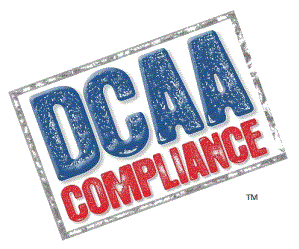Okay, I have gotten this question twice in the last month from DCAA reference adequacy reviews:
“Schedule L—We were unable to reconcile the G&A Salaries amounts & Vacation Wages totals to totals on Schedule B. Please identify which accounts from the schedule B tie back to the amounts listed on the schedule L. Provide a detail explanation for any differences.”
The question highlights issues surrounding FAB 43 dealing with vacation accruals but I realize that DCAA is trying to get the Schedule L to tie between the general ledger and the 941s. Of course, it would make more sense to change the form but considering how screwed up the Schedule I still is after several revisions, I will not hold my breath.
I am thinking we add a line onto the Schedule L after the vacation or PTO account that says “Adjust Vacation Accrual to Cash Payments”.
Of course this is an excellent and legitimate target for DCAA audit but I am not sure it is appropriate for adequacy review.

This is one of the most common issues when completing the Incurred Cost Submission. The actual answer is that it should match to the penny with Schedule L. However, like mentioned on the article anyone will have to make adjustments to the schedule and fully reconcile the 941, make references to each line and understand the adjustments. Besides that the 941 has total moneys paid, which include vacation used, not the vacation accrued, you also have to take into account if the company has been making correct accrual for vacation based on the actual cost. This is common if the company pays salary and semi-monthly as the hourly rate will vary based on the number of hours work within each period. Also additional accrual have to be made for health insurance deducted as those amounts are also deducted from the gross pay and therefore, are not shown on line 5a of the 941 report. Other adjustments similar to the health insurance payments made need to be made to close the gap differences.
Personally, when completing any Incurred Cost Submission I have never been able to close the gap to zero, but to an amount that is considered immaterial, based on the total amount of payroll for the year. So take into account what is an immaterial amount and its determination. However, the differences should be well documented. These materiality also arise from payroll adjustments made during the payroll processing, but not recorded appropriately on the accounting system. The most common one is when a timesheet change is process, some people tend to forget that it must be on the actual timeframe and for what is paid, and not what the system may be calculating. Other differences tend to be related to bonuses amounts not computed correctly either, but fully accounted on the 941 reports.
All in all, GAAP knowledge or lack of thereof, sometimes affect more the company’s accounting processes than what people tend to believe and understand. So, I will turn around this question to “how much does lack of knowledge and application of GAAP can affect the company’s financial and its compliance.” Rather than citing rules and arguments about GAAP interpretation I think is healthier to focus on company’s compliance and details on its processes to make more accurate calculation on payments and appropriate accruals. After all, compliance to GAAP with its full interpretation is a mandate by DCAA and the Federal Government (see FAR 31).
Schedule L is very important to any DCAA audit and its reconciliation in Schedule L even more as that is what the company is representing that it has incurred in direct cost as salaries and wages for the period analyzed, which affect the full computation and recovery cost of indirect expenses. Schedule L is the one that I paid strong attention as that is a self validation of cost. For services company this constitute more than 70% of the cost on their income statement when analyzed in aggregate mode: Direct Labor, plus indirect labor cost.